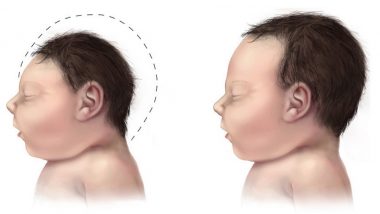The National Brain Research Centre (NBRC) has identified the mechanism through which zika virus causes microcephaly, reports The Hindu. Microcephaly, one of the side effects of the Zika virus infection, is described as a rare neurological condition, in which an infant’s head is significantly smaller at birth as compared to children of its age and sex. The mechanism by which the virus caused the disorder was unclear, but now the NBRC has now finally uncovered the process.
According to the researchers, the envelop protein (E protein) of the virus, which helps it enter the brain cells of the infant is responsible for retarding the growth of the neural cells in the foetal stage and killing the cells that were on their way to become neuron-like. The joint effect of the two reduces the number of brain cells in the foetus, leading to a smaller head.
With this discovery, scientists opine that more studies need to done on how to stop the E protein of the virus, which helps it gain entry into the foetus’ brain. Dr Pankaj Seth the corresponding author of the paper published in the journal Cell Death & Differentiation says that treatment of microcephaly lay in targeting this E protein.
The E protein in the Zika virus is quite different from its other flavivirus counterparts such as dengue, West Nilevirus, yellow fever and Japanese Encephalitis. The first author of the paper Reshma Bhagat from NBRC opined that when the four proteins identified in the other flaviviruses were produced in exces, the E protein was found to be more powerful in slowing down the proliferation of the brain stem cells. The researchers are also sequencing the RNA of stem cells after exposing them to E protein to understand how the stem cells react to the protein.
The researchers sequenced the RNA and found that there were 25 microRNA of stem cells that were either expressed in excess or very little when they were in the presence of the E protein. The researchers noted that when the E protein is over-expressed inside the stem cells, it affected the formation of the neurons, causing the cells to die naturally. While the E protein was unable to kill the stem cells, it was able to kill the neurons that make up the brain cells of human beings.
The researchers collaborated with Professor Jonaki Sen from IIT Kanpur and introduced the E protein in pregnant mice at 13.5 days gestation. The brain cells that were harvested two days later showed they were less in number and weren’t proliferating.
(The above story first appeared on LatestLY on Aug 02, 2018 01:10 PM IST. For more news and updates on politics, world, sports, entertainment and lifestyle, log on to our website latestly.com).













 Quickly
Quickly


